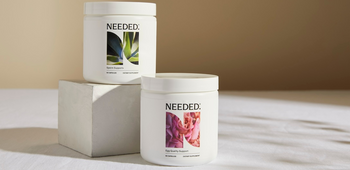Iron 101: A Guide to Pregnancy and Postpartum
Iron is critical during pregnancy, but too much can be just as dangerous as too little. An iron deficiency puts you at risk of anemia. Too much iron generates oxidative stress and alters the gut microbiome. Let's break down your iron needs through all four trimesters, including low-iron symptoms in pregnancy and how much iron you really need during the postpartum phase.
Why Iron Levels Drop During Pregnancy and Postpartum
Did your iron levels drop during pregnancy, and you're unsure why? It's likely due to increased demands and not actual nutritional decrease. During pregnancy, the body needs more iron to support the increased blood volume of the baby and the growing baby. Many women’s bodies cannot meet the increased demand, so the iron level in their blood falls. Anemia is common after birth because of the blood loss associated with the birth process and postpartum.
Other reasons for low iron levels during pregnancy and postpartum:
- Not consuming enough iron-rich foods (especially in the first trimester, when queasiness is so common!)
- Poor absorption
- Gut health issues
- Excessive bleeding, or hemorrhaging, after birth
If you had low iron (anemia) during pregnancy, you are more likely to have it postpartum, too.
Why Iron Is Important During and After Pregnancy
In utero, the baby needs iron to support a healthy birth weight and neurodevelopment. Healthy iron levels also support thyroid function and placenta development.
Iron supports several critical functions during pregnancy and postpartum:
- During the first trimester, iron supports rapid blood volume increase and early fetal development.
- During the second trimester, iron supports rapid fetal growth and development (especially the brain) and oxygen production and delivery to the mother and baby.
- During the third trimester, the mother's iron levels support the baby’s iron stores after birth and help prevent postpartum anemia.
- During postpartum, iron helps rebuild blood loss from delivery and lochia (the normal phase of bleeding that can last weeks after delivery).
Symptoms of Pregnancy-Related Iron Deficiency
If you haven’t had your blood Iron (Ferritin) levels checked recently, it’s helpful to be aware of some signs of Iron deficiency. Signs of iron deficiency include:
- Extreme fatigue
- Weakness
- Pale skin
- Chest pain
- Fast heartbeat
- Shortness of breath
- Headache
- Dizziness or lightheadedness
- Cold hands and feet
- Inflammation or soreness of the tongue
- Brittle nails
- Unusual cravings for non-food substances (e.g., ice, dirt)
If you are experiencing these symptoms, it’s a good idea to get your blood Iron (ferritin) levels checked.
How Much Iron Do You Need During Pregnancy?
Iron needs fluctuate throughout pregnancy and postpartum. Here are the Recommended Dietary Allowance (RDA) for iron in women at different life stages:
| Life Stage | RDA for Iron (mg/day) | Notes |
| Adult women | 18 mg | Women with normal menstrual cycles and periods. |
| Pregnant women | 27 mg | Increased need due to fetal development and blood volume expansion. |
| Breastfeeding women | 9 mg | Assumes no menstruation but does not account for blood loss during delivery or postpartum bleeding. |
We recommend continuing to target 27mg of Iron through diet and supplementation for at least the first 6 weeks of recovery to support blood rebuilding. After that, a number of variables will determine your ongoing needs, such as ferritin (blood Iron) levels, breastfeeding status, dietary intakes, and whether or not your cycle has returned. We recommend getting testing at this stage to determine your current status and to inform your own needs.
How Much Iron is "Too Much?"
Too much iron during pregnancy can also be a problem—more than 45 mg per day can be toxic. If you’re already taking an iron supplement as part of your pregnancy or postpartum supplement stack, there’s no need to also overdo it with red meat or other iron-rich foods in your diet.
What Type of Iron Is Safe and Optimal
Iron is found in both plants and animals. Animal sources of Iron (heme Iron) include red meat, poultry, and fish. Plant sources of Iron (non-heme Iron) include spinach, chard, lentils, chickpeas, quinoa, and pumpkin seeds.
Our bodies absorb heme iron better than non-heme iron, so iron deficiency is more common amongst those with limited red meat consumption. It can be challenging for pregnant and postpartum mothers to meet iron requirements, whether it’s through diet restrictions, aversions, or blood loss after birth.
If you need to supplement to meet daily iron requirements, we recommend ferrous bisglycinate chelate, a mineral chelate in which iron is bound to two glycine amino acids. We chose this form for the Needed Prenatal Iron supplement, as the body easily absorbs it and minimizes the constipation and gastric upset that is common with iron supplements.
Iron Supplements: Why We Customize Dosages
While many prenatal vitamins include large doses of Iron in their formulas, and others omit it entirely without any mention, our research led us to a different approach. We created smaller doses that can be taken individually or combined for a larger dose as needed. This allows you to modify your dose based on your stage of pregnancy or postpartum (plus what your diet might look like at the time).
By dosing separately from the Needed Prenatal Multi, we promote optimal absorption of all nutrients needed and reduce the risk of taking too much supplemental iron. Our plan makes it easy to layer on the specific amount of iron you need.
A Smarter Iron supplement With Needed
Iron is essential during pregnancy and postpartum, but dosing isn't one-size-fits-all. Have your iron levels checked, monitor how you feel, and consider the Needed Prenatal Iron for a fully individualized approach to your iron needs, whether pregnant, postpartum, or breastfeeding.

















